
Nanotechnology and Precision Engineering
Scope & Guideline
Connecting global minds in the realms of nanoscience and engineering.
Introduction
Aims and Scopes
- Nanomaterials and Nanostructures:
Exploration of novel nanomaterials, including carbon nanotubes, graphene, and metal nanoparticles, focusing on their synthesis, characterization, and application in various engineering fields. - Precision Machining and Fabrication Techniques:
Research on ultra-precision machining methods, including diamond turning and micro-EDM, emphasizing innovations that enhance surface quality and dimensional accuracy. - Sensors and Sensor Technologies:
Development and characterization of advanced sensors, including biosensors, pressure sensors, and strain sensors, leveraging nanotechnology for improved performance and sensitivity. - Microfluidics and Lab-on-a-Chip Technologies:
Investigation of microfluidic systems for biological and chemical applications, focusing on techniques for single-cell analysis and high-throughput screening. - Energy Harvesting and Storage:
Research on nanotechnology applications in energy systems, including nanogenerators and advanced battery materials, aimed at improving energy efficiency and storage. - Modeling and Simulation in Nanotechnology:
Utilization of computational methods, such as molecular dynamics and finite element analysis, to predict and optimize the behavior of nanostructured materials and devices. - Biomedical Applications of Nanotechnology:
Application of nanotechnology in biomedical fields, including drug delivery systems, imaging, and diagnostics, with a focus on enhancing therapeutic outcomes.
Trending and Emerging
- Advanced Biosensors and Bioengineering Applications:
Recent publications show a significant increase in research focusing on biosensors and their applications in healthcare, emphasizing the integration of nanotechnology for enhanced detection and monitoring capabilities. - Energy-Efficient Nanomaterials:
There is a growing trend towards developing nanomaterials for energy applications, particularly in energy harvesting and storage, reflecting the global shift towards sustainable energy solutions. - Smart and Flexible Devices:
Emerging research on flexible and wearable devices, particularly those utilizing nanomaterials for applications in health monitoring and environmental sensing, indicates a strong trend towards innovative, user-friendly technologies. - Microfluidic Technologies for Single-Cell Analysis:
There is an increasing emphasis on microfluidic platforms designed for single-cell manipulation and analysis, showcasing advancements in biomedical research and diagnostics. - Nanotechnology in Environmental Applications:
Research exploring the use of nanotechnology for environmental monitoring and remediation is gaining traction, highlighting its potential to address pressing environmental challenges. - Integration of AI and Machine Learning in Nanotechnology:
The incorporation of artificial intelligence and machine learning techniques in the design and optimization of nanomaterials and devices is emerging as a critical area of focus, indicating a convergence of disciplines.
Declining or Waning
- Traditional Machining Techniques:
There has been a noticeable decline in publications focused on conventional machining methods as the field shifts towards more advanced and precise techniques like ultra-precision machining and additive manufacturing. - Basic Material Characterization Studies:
Research solely focused on fundamental characterization of materials without application-based perspectives is less prevalent, as the journal emphasizes applied research that integrates nanotechnology with practical engineering solutions. - Non-Nanotechnology-Based Sensors:
There is a diminishing number of publications centered on traditional sensor technologies that do not utilize nanomaterials, reflecting a shift towards more innovative and sensitive nanoscale sensor designs. - General Reviews without Novel Insights:
The journal has seen fewer general review articles that do not provide new insights or advancements in the field, indicating a preference for original research that contributes to the body of knowledge.
Similar Journals
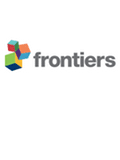
Frontiers in Materials
Exploring New Horizons in Materials Innovation.Frontiers in Materials, an esteemed journal published by FRONTIERS MEDIA SA, is a leading platform in the field of Materials Science, with a notable impact factor placing it in the Q2 category of its discipline as of 2023. Since its establishment as an Open Access journal in 2014, it has fostered considerable academic exchange, allowing researchers from around the globe to share their innovative findings and insights. Based in Lausanne, Switzerland, this journal not only emphasizes high-quality peer-reviewed articles but also prioritizes rapid dissemination of research, as evidenced by its commendable Scopus ranking of #62 out of 196 in Materials Science (miscellaneous). By consistently striving to bridge the gap between academia and practical applications, Frontiers in Materials serves as an invaluable resource for researchers, professionals, and students seeking to delve into cutting-edge advancements and transformative applications in materials science.

ChemNanoMat
Unveiling the Potential of NanomaterialsChemNanoMat is a prestigious academic journal published by WILEY-V C H VERLAG GMBH, dedicated to the rapidly evolving fields of nanoscale materials and their applications in diverse areas such as biomaterials, energy engineering, and environmental sustainability. With the journal's ISSN 2199-692X and recognized quality, as evidenced by its Q2 rankings across multiple categories—including Biomaterials and Renewable Energy—ChemNanoMat serves as a crucial platform for researchers, professionals, and students to disseminate their findings and foster collaborations. Operating from Germany, the journal encourages the exploration of innovative materials solutions to meet tomorrow's challenges. While it does not currently offer open access options, it remains highly regarded in the academic community with a competitive impact factor that emphasizes its relevance and influence in guiding future research directions. Covering a broad scope from 2015 through 2024, ChemNanoMat is key for anyone invested in the advancement of materials chemistry and related scientific fields.
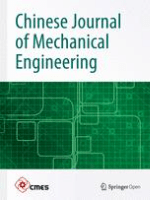
Chinese Journal of Mechanical Engineering
Empowering Engineers Through Open Access InsightsChinese Journal of Mechanical Engineering, published by SPRINGER, is a premier open-access platform dedicated to advancing the field of mechanical engineering. With a publication history dating back to 1990 and earning a distinguished Q1 ranking in both Industrial and Manufacturing Engineering and Mechanical Engineering as of 2023, this journal is essential for researchers and professionals eager to disseminate and access high-quality research. Featuring a robust impact factor and a Scopus ranking that places it in the top 18% of mechanical engineering journals, it serves as a significant resource for innovative findings and practical applications in engineering. Benefiting from its open-access status since 2018, the journal ensures wide accessibility to its content, fostering collaboration and knowledge sharing within the global mechanical engineering community. Researchers, students, and industry professionals will find a wealth of insightful articles that address contemporary challenges and explore future advancements within the discipline.
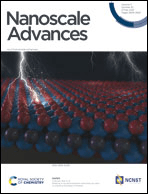
Nanoscale Advances
Unleashing Potential: Where Nanotechnology Meets Excellence.Nanoscale Advances, published by the Royal Society of Chemistry, stands out as a leading open-access journal dedicated to advancing the field of nanoscience and nanotechnology since its inception in 2018. With a specialized focus on areas such as atomic and molecular physics, bioengineering, chemistry, and materials science, this journal has consistently achieved top-tier rankings across several categories, reflecting its high-impact contribution to research and innovation. Currently classified in the Q1 quartile for both Atomic and Molecular Physics and Chemistry (Miscellaneous), and Q2 for Bioengineering, its prestige is underscored by impressive Scopus rankings, including a notable 34th position in General Engineering. With its commitment to disseminating high-quality research, Nanoscale Advances serves as an invaluable resource for researchers, professionals, and students alike, fostering collaboration and scholarly exchange in the rapidly evolving landscape of nanotechnology.

Micro & Nano Letters
Unlocking the potential of tiny technologies.Micro & Nano Letters is a prominent open-access journal published by WILEY, dedicated to advancing the fields of micro and nanoscale science and technology. Since its inception in 2007, the journal has been a valuable resource for researchers, professionals, and students, delivering high-quality research that supports innovation and collaboration in bioengineering, biomedical engineering, condensed matter physics, materials science, and nanoscience. With an impact factor that reflects its growing influence, Micro & Nano Letters has earned recognition in various Scopus categories, including a Q3 ranking in both Condensed Matter Physics and Materials Science as of 2023. Its commitment to open access, established in 2021, ensures that the latest developments in micro- and nanotechnologies are accessible to a global audience, fostering a multidisciplinary dialogue across academia and industry. The journal continues to play a critical role in disseminating cutting-edge research and promoting technological advancements worldwide.
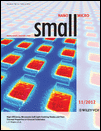
Small
Pioneering Discoveries in Biomaterials and Beyond.Small is a premier academic journal published by WILEY-V C H Verlag GmbH, focusing on cutting-edge research across a multitude of disciplines including biomaterials, biotechnology, chemistry, engineering, materials science, medicine, and nanoscience. With an impressive impact factor and recognized in the top quartile (Q1) across these categories, Small serves as a vital platform for scientists and researchers aiming to disseminate innovative findings and explore the interplay between small-scale materials and their large-scale applications. Enjoying a broad readership, the journal has been key in advancing knowledge from its inception in 2005 and aims to foster collaborations and discussions that steer the future of material science and biotechnology. Though not open access, research published in Small remains invaluable for professionals and students eager to explore the advancements at the nanoscale, promoting a comprehensive understanding of modern scientific challenges and opportunities.
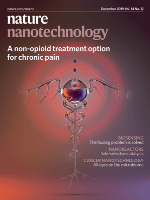
Nature Nanotechnology
Exploring the Boundaries of Nanotechnology Research.Nature Nanotechnology, published by NATURE PORTFOLIO, stands at the forefront of scientific innovation, focusing on the rapidly evolving field of nanoscience and nanotechnology. With an impressive impact factor and ranking in the top Q1 quartiles across multiple disciplines—including Atomic and Molecular Physics, Bioengineering, and Materials Science—this journal is a pivotal resource for researchers and professionals dedicated to advancing knowledge and applications at the nanoscale. Its diverse scope encompasses cutting-edge research that bridges disciplines, addressing critical challenges in engineering, physics, and biomedical fields. Although the journal currently does not offer an open-access option, readers can access a wealth of information that is vital for anyone involved in pioneering research and development efforts. With its robust editorial standards and a commitment to publishing high-caliber, groundbreaking work, Nature Nanotechnology serves as an indispensable platform for the dissemination of transformative ideas that will shape the future of technology and science.

MICROSYSTEM TECHNOLOGIES-MICRO-AND NANOSYSTEMS-INFORMATION STORAGE AND PROCESSING SYSTEMS
Illuminating the future of electronics through rigorous research.MICROSYSTEM TECHNOLOGIES-MICRO-AND NANOSYSTEMS-INFORMATION STORAGE AND PROCESSING SYSTEMS is an esteemed scholarly journal published by SPRINGER HEIDELBERG, bringing together cutting-edge research in the fields of microsystems and nanosystems, with a specific focus on information storage and processing technologies. With its origins tracing back to 1994, this journal has established a solid reputation within the academic community and currently ranks in Q3 across key disciplines, including Condensed Matter Physics and Electrical and Electronic Engineering, as assessed by the 2023 category quartiles. The journal is notable for its contribution to advancing knowledge in Nanoscience and Materials Science, particularly in the domains of electronic, optical, and magnetic materials. As a pivotal resource for researchers, professionals, and students alike, it offers insights into innovative methodologies, applications, and breakthroughs in microsystems technologies that are shaping the future of electronics and computing. While currently not an open-access journal, it maintains a commitment to disseminating significant findings in the rapidly evolving landscape of information processing systems, fostering collaboration and knowledge exchange within the scientific community.
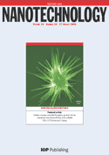
NANOTECHNOLOGY
Shaping the Future with Cutting-edge Nanotechnology Research.NANOTECHNOLOGY is a premier academic journal published by IOP Publishing Ltd, focusing on cutting-edge advancements in the interdisciplinary field of nanoscience and nanotechnology. With a strong emphasis on research that bridges biology, chemistry, engineering, and materials science, this journal presents high-quality, peer-reviewed articles that cater to the diverse interests of researchers, professionals, and students alike. NANOTECHNOLOGY boasts an impressive ISSN: 0957-4484 and E-ISSN: 1361-6528, and holds a notable position within Scopus, ranked in the second quartile (Q2) across multiple categories including Bioengineering and Mechanical Engineering, underscoring its vital role in advancing the field. The journal's impact is further highlighted by its robust rankings, making it essential reading for those looking to stay at the forefront of nanotechnology research. Commencing in 1990 and with publication extending through to 2024, NANOTECHNOLOGY provides a unique platform for disseminating significant findings and innovative methodologies while fostering collaborations across various scientific disciplines. In a rapidly evolving technological landscape, this journal not only enhances academic discourse but also contributes to the practical applications of nanotechnology in real-world scenarios.
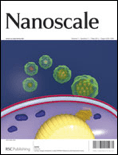
Nanoscale
Connecting Global Minds in Nanoscience.Nanoscale is a premier academic journal published by the Royal Society of Chemistry, dedicated to advancing the field of nanoscience and nanotechnology. With both its ISSN (2040-3364) and E-ISSN (2040-3372) ensuring wide accessibility, the journal is renowned for its high-impact research contributions, reflected in its impressive 2023 Impact Factor and prestigious Q1 ranking in both Materials Science (Miscellaneous) and Nanoscience and Nanotechnology categories. Since its inception in 2009, Nanoscale has fostered a collaborative platform where leading researchers from around the globe share their innovative findings across a multitude of topics spanning from material synthesis to applications in nanotechnology. The journal not only serves as a valuable resource for professionals, researchers, and students but also actively engages the academic community in discussing emerging trends, thus shaping the future of nanoscience. Situated in the heart of the UK at Thomas Graham House, Science Park, Milton Rd, Cambridge CB4 0WF, Nanoscale remains a key publication for those looking to keep abreast of the latest breakthroughs in an ever-evolving field.